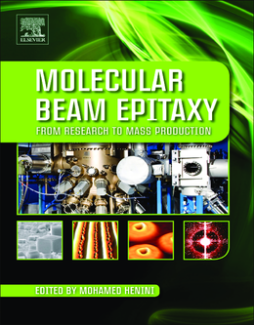
Additional Information
Book Details
Abstract
This multi-contributor handbook discusses Molecular Beam Epitaxy (MBE), an epitaxial deposition technique which involves laying down layers of materials with atomic thicknesses on to substrates. It summarizes MBE research and application in epitaxial growth with close discussion and a ‘how to’ on processing molecular or atomic beams that occur on a surface of a heated crystalline substrate in a vacuum.
MBE has expanded in importance over the past thirty years (in terms of unique authors, papers and conferences) from a pure research domain into commercial applications (prototype device structures and more at the advanced research stage). MBE is important because it enables new device phenomena and facilitates the production of multiple layered structures with extremely fine dimensional and compositional control. The techniques can be deployed wherever precise thin-film devices with enhanced and unique properties for computing, optics or photonics are required. This book covers the advances made by MBE both in research and mass production of electronic and optoelectronic devices. It includes new semiconductor materials, new device structures which are commercially available, and many more which are at the advanced research stage.
- Condenses fundamental science of MBE into a modern reference, speeding up literature review
- Discusses new materials, novel applications and new device structures, grounding current commercial applications with modern understanding in industry and research
- Coverage of MBE as mass production epitaxial technology enhances processing efficiency and throughput for semiconductor industry and nanostructured semiconductor materials research community
"Molecular beam epitaxy is the process of depositing atoms or molecules onto a crystalline substrate under conditions of high or ultra-high vacuum. The substrate's crystal structure provides a template for the particles in the beam to organize themselves as they deposit onto the substrate. The technique can be put to a remarkably broad set of uses. In this 31 chapter volume, editor Henini…brings together a diverse set of physicists, electrical and mechanical engineers, and nanotechnologists to cover many of today's applications."--Reference & Research Book News, December 2013
